An Interview With Professor Lewis
04/01/2011 – In January 2011, Second Line of Defense sat down with Professor Lewis to discuss the current status and dynamics of hypersonics. Mark J. Lewis is chairman of Clark School’s Department of Aerospace Engineering at the University of Maryland, College Park, and President of the American Institute of Aeronautics and Astronautics. He was the chief scientist of the U.S. Air Force from 2004 to 2008.
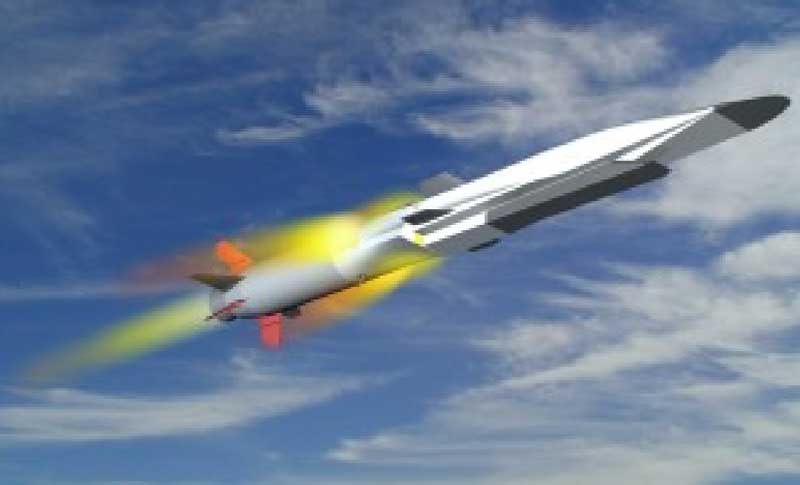 X-51 (Credit: http://www.11news.us/05/speed-of-soundx-51a-waverider.html)http
X-51 (Credit: http://www.11news.us/05/speed-of-soundx-51a-waverider.html)http
SLD: There’s another aspect that I find very interesting which is when folks focus on how good our simulation capability is or our models to predict behavior, and they are extraordinary, but the problem with mathematics is that it can be hypothetical. It can be based on predictive behavior. It depends on how you do your models, but at the end of the day when you’re pushing the envelope in an operational sense, you don’t know fully the outcome in advance.
And when you’ve seen the test you now are trying to build a predictive model on, well what would happen if I changed this composite technology or whatever. The other thing that’s lost in this current conversation—and you see this especially with things like ABLs and F-35s—is the ability to manufacture something is arguably as important as your ability to design something.
It’s the front end of the cycle, and we’ve just lost any understanding that if I’ve gotten to the point where I can actually manufacture a stealth aircraft, I’ve achieved something historically significant, but it’s just not perceived as important.
And it’s at the end of the day if you can figure out your hypersonic cruise missile and you can replicate that missile in a manufacturing process, but to do that you need folks who actually have experience in manufacturing advanced materials, composites and all this sort of stuff. So that I think that testing to me is part of the pre-manufacturing process if we could call it that.
Lewis: Once again, I agree with you completely, on your comments on modeling and simulation. As a researcher, most of the research that I’ve done has been analytical and computational modeling of high speed flow, and yet I’ll be the first to tell you that the best computational models that we have don’t perfectly predict flow properties.
And the reason is, we don’t fully understand the physics, but even if we did, we have to remember that any computational model never quite gets the solution correctly. That’s fundamental to the way we solve the governing equations of aerodynamics on a computer. Let me explain that – a digital computer solves equation on discrete numerical grids, but real flow doesn’t work that way. When we solve a problem on a computer, we’re always making approximations. Even worse, the equations that we solve, those governing equations of aerodynamics, are really a simplification of ever-more complex equations that govern how molecules move around the vehicle.
So we know we never quite get it right, and I can give you example after example of fundamental problems that we really don’t know how to simulate. Now, if I were to give you some data and also give you a computer code, you can probably do a nice job of matching the code results to the data, as long as you know the right answer before you start.
It’s when we don’t know the answer before we start that the numerical simulations are most uncertain, and that’s why we frankly need experiments; and also, by the way, even experiments don’t always quite get it right.
For example, the conditions inside a wind tunnel are not exactly the same conditions that a vehicle experiences in flight. That’s especially true at hypersonic speeds, by the way. And that’s why flight test, actually putting things in the air, is absolutely critical. You can simulate all you want, you can wind tunnel test all you want – and rest assured, they’re both important – but until you actually put the vehicle in the air and light off a real engine and fly at the correct speed, you really won’t understand fully and completely how that system is going to behave.
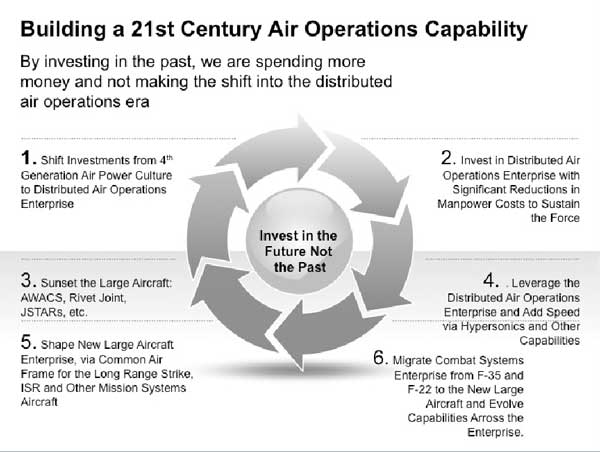 Speed is the Next Step After Shaping the Distribution Operations Enterprise (Credit: SLD)
Speed is the Next Step After Shaping the Distribution Operations Enterprise (Credit: SLD)
SLD: There’s another aspect. If we go to the operational modality, one of the things that folks have really not taken onboard is the revolution in mobility, the revolution in defense, is so fundamental in terms of identifying the targets you want to affect. And one of the things I find interesting is if you think about stealth as a hovering asset and you’re either directing strike, or as Mike Wynne says, you really want to use the best sensor on the battlefield last, which I think is a very good proposition, but there’s also the point that when you have a kinetic effect on a mobile anything and you’re looking interactively at the defenses and offensive capability of your opponent, you’re essentially creating fractural results.
That is unpredictable results that essentially then recreate very quickly a different kind of target set, so for us to use these hypersonic assets effectively, they can be leading elements against things that you just know you’ve got to get out of the way, or they can be part of this interactive control of a dynamic battlefield.
And for that to work, you’re going to have to have forward deployed assets of some sort whether they be space based or whatever. They could be aircraft. They could be RPAs.
Lewis: I agree with you completely, and that was actually a theme that I kept striking with the Air Force Research Lab folks who were working in hypersonics.
You need to think about how the hypersonic capability factors in with the other capabilities you bring to bear.
I’ll give you my favorite example of that. There are some folks in the hypersonics community who envision very large hypersonic cruisers, including airplanes that might take off from anywhere in the continental United States and fly to anywhere on the globe in less than two hours to perform some missions. Sounds great, but when you actually work through the basic physics, you discover that it’s almost impossible to do. Such a global cruiser is the wrong use of hypersonics. That type of vehicle would be too expensive and too hard to build, and simply wouldn’t have sufficient range to do the envisioned mission anyway.
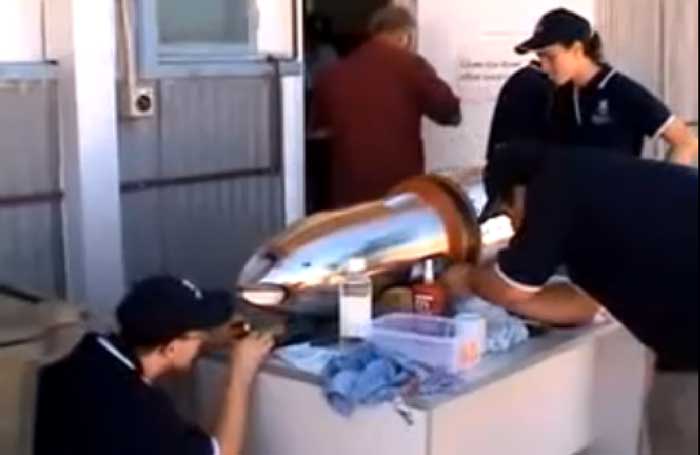
Now let’s step back and ask, “all right, how do we combine hypersonics with other systems?” For example, a long-range next-generation bomber might fly to a loiter point at low speed, but when it has to launch a missile, it launches that missile at hypersonic speed. It peels off a hypersonic cruise missile for example. That’s really a winning combination.
In a system like that, each of the technologies is doing what they do best, and combine to form a package that really, truly is game changing. So I take your point exactly.
There’s another aspect to all of this, and that’s frankly the cost factor, the economics. People often say that hypersonic systems will be so expensive that they’ll simply be cost prohibitive, but to that I answer that if hypersonics brings so much of the capability that I think it will, it will buy its way onto the platform.
We might be able to do more with one hypersonic system than what might have taken many, many lower speed systems. There’s a capability multiplication there that I think actually makes hypersonic systems quite cost effective.
SLD: Let us go back to your discussion of the various tests in 2010. Could you discuss a bit more the X-51?
Lewis: X-51 is not the first air breathing hypersonic vehicle that’s been flown. NASA flew a vehicle called X-43, which had a lot of similarities to X-51, and even our partners in Australia flew a small sounding rocket that used some of the same technology in a program called HyShot.
HyShot was the first flight of one of these engines that I mentioned, these scramjet engines, supersonic combustion ramjet engines. The catch is that when the Australian’s did it in 2002, they did so for only a few seconds, and they didn’t produce net positive thrust; in other words, the engine produced thrust, but it had more drag than thrust. In order to accelerate a vehicle, thrust must be greater than drag.
Two years later, NASA flew the X-43 off the wing of a B-52. In fact, they used the same B-52, nick-named “Balls 8”, that had been used to fly the X-15. X-43 was boosted to high speed on a Pegasus rocket for a total of three flights. The first flight was not successful – the Pegasus booster lost a fin. NASA spent two years trying to figure out what went wrong, and they finally flew it again. When they flew it a second time, it hit Mach 7. They flew a vehicle a third time and it hit a record-setting Mach 10. Each one of those flights lasted for about ten seconds under power, and they burned hydrogen fuel. That’s an important distinction from X-51, which used jet fuel, because hydrogen is not a very practical fuel, certainly not from a battlefield standpoint.
The engines on X-43 only ran for about ten seconds because they were limited by the fuel supply, but also because the design of the engine was such that if they had powered it for much longer than ten seconds, the engine walls would have melted.
Now let’s jump to X-51. Why was X-51 a significant leap? I always argue that X-51 actually built on much of the legacy of the HyShot flight and more importantly, the X-43 flights. And by the way, one of the true success stories of X-51 is that we established a wonderful partnership between NASA and the Air Force on X-51, and again, Mike Wynne gets a lot of credit for this. A lot of the NASA guys and gals that worked on X-43 brought their expertise to our X-51.
X-51 looked like a missile. That’s in contrast to X-43, which was kind of a sub-scale model of an airplane. Also of note, X-51 burned relatively traditional jet fuel. It burned JP-7, the same jet fuel that the SR-71 uses. That’s a hydrocarbon fuel, which is a more practical fuel than hydrogen. JP-7 is something that we know how to handle operationally.
Perhaps most importantly, X-51’s big advance was that its engine was thermally balanced. That means that the fuel circulated through the walls of the engine and kept the engine from melting. In principle, that engine could operate for as long as you could supply it with fuel.
It’s very clear how you go from something that looks and operates like an X-51, and by the way, just like X-43, X-51 flew off the wing of a B-52. So there again, you see the marriage of a Legacy airplane with this high-speed system.
When that first flight of X-51 occurred it was supposed to fly for 300 seconds. Unfortunately, it wound up flying for only about 200 seconds. Of those 200 seconds, about 150 seconds or so were under power of the air breathing system, that scramjet engine, but that amount of test time increased by almost a factor of ten the total amount of flight time that we have had with an air breathing hypersonic engine.
As it turns out that, there seems to have been a seal failure in the nozzle. The nozzle has a seal between the end of the engine and the rest of the airframe that came loose early in the flight. Despite that, lots of things worked as well as, or better than expected.
Clearly X-51 wasn’t an operational system. One obvious question is “what comes next?” and the thing that comes to my mind first is making a vehicle based on X-51 that is much more of an operational weapon. The seal that failed on the first flight shouldn’t even be present in an actual operational system. Of course, X-51 didn’t have a warhead of any sort. It didn’t have the sort of guidance and navigation package that you’d want to put on a real missile, so there’s lots left to do if we continue marching down a path towards an operational system.
SLD: So what are the downsides of the test results?
Lewis: Let me offer a little bit of tough love. I’ve talked about the great successes for X-51 despite its seal failure. Let me tell you some of the problems.
Problem number one, and it kind of gets back to an earlier theme, the program has too few flights. The whole X-51 program right now is set for three more flights, for a total of four. Four flights is not a viable flight test program. X-15 did 199 flights. In today’s constrained environment, I’m not expecting 199 flights, but if we only have four flights it makes it very, very difficult to do the real sorts of flight tests that we need, to really push out the envelope. To take risks.
SLD: If you don’t invest in the test flights, you’re not going to have the capability.
Lewis: Exactly. One of the things I saw firsthand is that flight testing has gotten incredibly difficult in part because we are so risk averse.
I’ll give you an example of this: X-51 flew on May 26th. It was originally supposed to fly on May 25th, but just before the flight, a cargo ship sailed into the splash zone in the Pacific Ocean. I should mention that X-51 was launched out of Edwards Air Force Base and flew off Point Mugu, and just before they’re getting ready to fly, this ship sails into the splash zone and the flight gets scrubbed.
Now think about that, your flight test efforts are at the mercy of some international tanker sailing into this vast area in the Pacific Ocean, that’s kind of what we’ve done to ourselves. The chances of X-51 actually hitting that tanker were astronomically small, even if we had tried (and some of us thought we should)! The second flight attempt was May 26th. The ground crew at Edwards just did a phenomenal job, and their success was amazing considering that they basically had an ancient B-52 being used as the carrier aircraft. They had to start all eight engines three times, twice the first day and once the second day, in order to make that flight happen, and everyone was kind of holding their breath and crossing their fingers as those engines were starting up.
This is not a reliable way to do successful flight tests. It is this level of risk aversion, where we’re terrified to fly because several hundred miles off the coast a tanker has sailed into a splash zone, which is hurting our ability to test.
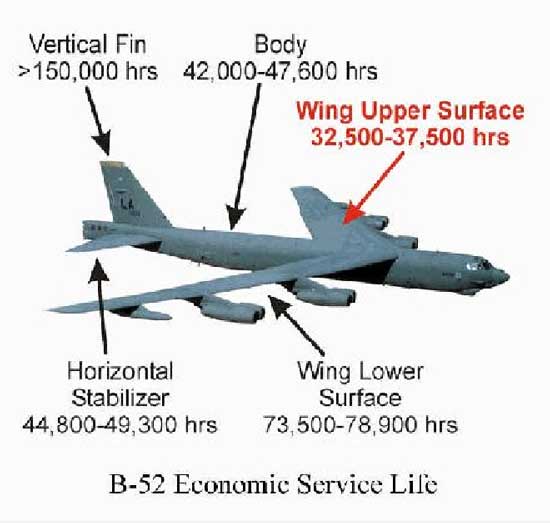 (Credit: http://www.fas.org/programs/ssp/man/uswpns/air/bombers/b52.html)
(Credit: http://www.fas.org/programs/ssp/man/uswpns/air/bombers/b52.html)
SLD: But the other part of that story that’s interesting is the condition of our infrastructure.
Lewis: And by the way, that ancient B-52 that was used to fly X-51 is the updated model of the B-52. The B-52 that was used to fly the X-15, Balls-8, was retired and they brought in the current B-52, which is still an antiquated airplane, so what does that say about our testing infrastructure?
So yes, you’re exactly right.
Another example – in White Oak Maryland the USAF operates the world’s foremost hypersonic wind tunnel it’s called Hypervelocity Tunnel 9, and it can simulate flight conditions at up to 14 times the speed of sound. That’s where HTV-2 is being tested right now. And it seems every year some bean counter somewhere tries to zero the funding for that tunnel. An irreplaceable asset, with one of the best testing teams in the USAF, and with a budget that’s a round-off error on someone’s ledger, and we have folks trying to shut it down. Unbelievable.
I will say though the plus side of our infrastructure is the professionalism of our people. It was just a marvel to behold the professionalism of the folks at Edwards who were running that X-51 flight test. I sat in on some of the pre-flight briefings and I got to sit in the control room. I also got to sit in the post-flight analysis, and it would just bring a tear to your eye to see the quality and the professionalism of the folks involved in that flight test. One of the engineers in the control room was a man named Johnny Armstrong – he’s a legend who has worked in test for the USAF for almost six decades – people like that are simply irreplaceable!
Back to X-51, it got us closer to an operational system, but it isn’t an operational system. For example, a scramjet won’t work at low speeds; it needs some other kind of engine to reach hypersonic conditions. X-51 accelerates to hypersonic speed using a solid rocket motor. It’s actually a U.S. Army ATACMS booster, almost off-the-shelf. This was a very clever solution- a low cost and proven system, but used in a new application. Even so, that’s not an operational system.
An operational X-51-derived missile would have to fit in a weapons bay. It can’t be hanging off the wing of a B-52 with a large army booster sitting on its tail. So you need to think about how you might make integrate this thing with existing aircraft, existing platforms, but also future platforms, and that level of thought hasn’t been fully applied yet. That’s another direction we need to be moving in.
SLD: We should be considering hypersonics and the next-generation strike vehicle simultaneously concurrently.
Lewis: Absolutely. I’ll tell you a quick anecdote from when I was in the Pentagon. At one point, Air Combat Command was doing an analysis of alternatives on a next-generation bomber – this was the last round – and there were some experts in the Lab who I thought had something to contribute, but they weren’t even being allowed to the meetings.
The folks who understood future technology capabilities and needs, as well as ways to interface, weren’t being invited to these planning meetings. I brought this to the Chief’s attention and General Moseley jumped right in and said, “Yes, by all means, these guys need to be in these meetings,” and we got them connected.
Because you’re exactly right. If we’re going to build a new aircraft it is going to be around for quite awhile, so it needs to be able to interface not only with current weapons, but future weapons, including weapons that we’re just now being able to envision. And so it’s absolutely vital that as we design these systems that we know what’s on the horizon, that the interfaces and the inter-connectivity be part of the design process.
SLD: There’s another reason you want to do that. It’s the only way we can guarantee that somebody will actually fund the hypersonic system.
Lewis: That’s true also. This again is something that I tell my hypersonic brethren which is that, at the end of the day, they need a customer. If they don’t have a customer, then they’re a bunch of guys playing in a sandbox pursuing their own pet hobby.
And they have to remember that they have to make the case to buy their way in.
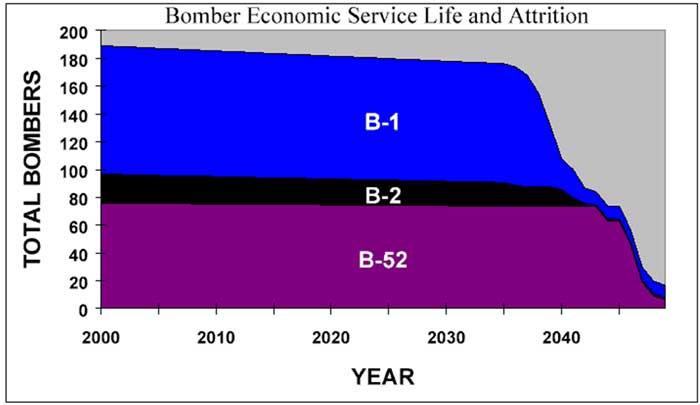
I know of folks in the hypersonics community who have latched on to a certain technology direction. They love a technology, and I’ll have to keep reminding them, look, your technology is fine, but you need to step back and not think about just this technology. You need to think about the capability that you bring to bear, and if this technology is the best way to do it, great. And if the technology isn’t the best way to do it, then you need to pursue another approach.
SLD: So we drive towards more affordability by having both key elements in each hand, the new platform and the new weapons regime we might be able to provide, and certainly, if we are not able to put hypersonic missiles on this aircraft, I don’t see the point of building it to be honest with you.
Lewis: You know I always laugh at the notion that a future war in which we’re still launching low speed cruise missiles. We’ll have all these cyber capabilities, these incredible sensor capabilities. We’ll find our targets. We’ll know what we want to hit. And then we push the launch button and out comes this slow, low-speed cruise missile that just cranks along at about Mach 0.8 and takes a couple of hours to hit the target, if it gets there at all through enhanced integrated air defenses.
But even if it makes it there, the target’s long gone! To me, with today’s notion of war, with today’s operational tempo, the idea that you see a target and you’re not going to launch as fast as you possibly can, that’s simply not a winning strategy.

